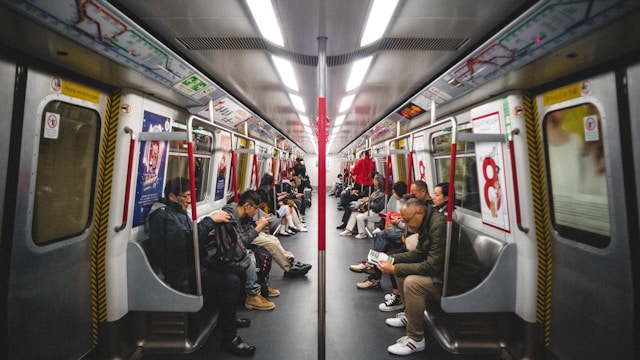
Miami might be known for its flashy cars and bustling highways, but don’t let that fool you—getting around without a car is totally doable. Whether you’re in town for the beaches, the nightlife, or a family vacation, the city offers a variety of public transit options to help you move around with ease. From sleek trains to vintage-style trolleys, here’s a breakdown of Miami’s transportation system so you can ride like a local (or at least not look totally lost).
1. Metrorail: The Backbone of the Transit System
Miami’s Metrorail is a 25-mile elevated train line that connects key parts of the city.
Why it’s useful:
Runs from the airport (via Orange Line) through Downtown, Coral Gables, and more
Clean, air-conditioned trains
Trains run every 15–30 minutes
Operates from about 5 AM to midnight
Pro Tip: Use the Orange Line from Miami International Airport (MIA) for a budget-friendly ride into town.
2. Metromover: Free and Futuristic
Downtown Miami’s Metromover is an elevated, driverless train—and it’s completely free to ride.
Best features:
Covers Brickell, Downtown, and the Arts & Entertainment District
Great for sightseeing and bar-hopping
Trains arrive every 90 seconds to 3 minutes
Air-conditioned and surprisingly scenic
3. Metrobus: Wide Coverage, Mixed Results
Metrobus services most of Miami-Dade County, including areas not covered by rail.
Good to know:
Over 90 routes available
Runs daily, though schedules can vary
Fares start at $2.25
Some routes run 24/7
Heads-up: Buses can be slow due to traffic. Use apps like Transit or Google Maps to track real-time arrivals.
4. Miami Trolley: Free, Quirky, and Tourist-Friendly
The Miami Trolley is a cute, vintage-style ride that offers free service in several city neighborhoods.
Why you’ll love it:
Covers Coral Gables, Little Havana, Wynwood, and more
Operates from around 6:30 AM to 11 PM (varies by route)
Great for hopping between museums, galleries, and cafes
Air-conditioned with Wi-Fi on some trolleys
5. Tri-Rail: Regional Connectivity
If you’re heading to Fort Lauderdale or West Palm Beach, the Tri-Rail is your best bet.
Details:
Commuter rail line serving South Florida
Connects MIA to northern cities
Inexpensive (fares range from $2.50 to $8.75)
Trains run every 30–60 minutes
6. Brightline: Luxury Rail Travel
For a more upscale ride, try the Brightline, a high-speed train connecting Miami with Aventura, Fort Lauderdale, Boca Raton, and West Palm Beach.
Why it’s a game-changer:
Modern trains with Wi-Fi, snacks, and comfy seats
Clean, fast, and reliable
Perfect for day trips or weekend getaways
7. Airport Connections: Smooth and Simple
Getting to and from Miami International Airport (MIA) is easy via:
Metrorail Orange Line
Metrobus Routes
Tri-Rail Shuttle to MIA Station
Fares are low, and travel times are reasonable—way better than fighting for a cab.
8. Fares and Payment: The EASY Card System
Miami-Dade Transit uses the EASY Card and EASY Ticket system.
How it works:
Tap your card at Metrorail gates or when boarding buses
Cards can be reloaded at stations, online, or via the GO Miami-Dade Transit app
Standard fare: $2.25 per ride
Daily, weekly, and monthly passes available for heavy riders
Conclusion: Efficient, Affordable, and Evolving
Miami’s public transportation may not be perfect, but it’s surprisingly efficient for a city known for car culture. With options like the free Metromover, the expansive Metrobus network, and connections to nearby cities via Brightline and Tri-Rail, getting around is easier than ever. Whether you’re exploring Little Havana, commuting from the suburbs, or just trying to catch a flight, public transit has your back. Just don’t forget your EASY Card—and maybe a portable fan.
